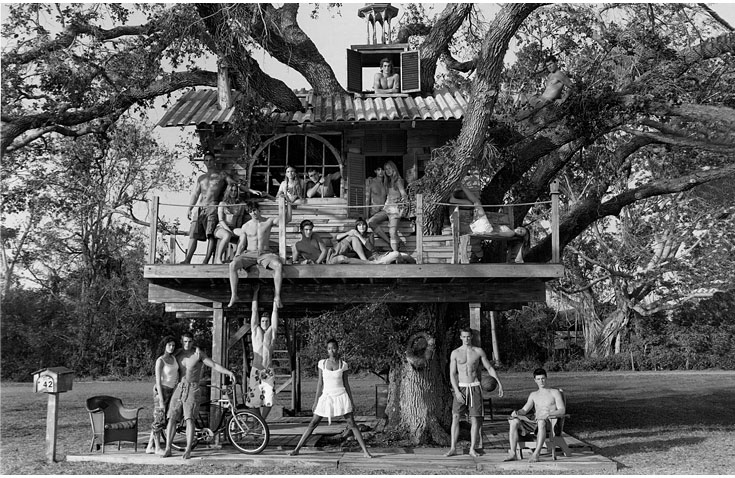Power to the Pedals

Early this decade, Parisian city planners grappling with traffic congestion, air pollution, and other challenges ventured outside the box. They were well aware that traditional transportation remedies such as widened roads and expanded parking typically relieve congestion in the short term but seed even greater longterm crowding while worsening pollution and carbon emissions. So they decided to use bicycles—some 20,000 of them, scattered across the city at metro stops and other convenient locations—to extend the reach of the Paris public transport system and to provide inexpensive, healthy transportation for short trips. Not your father’s transit plan, to be sure, but Paris’s public bike initiative symbolizes the new respect bicycles are getting in a growing number of municipal governments worldwide. Public bike programs are just one of many bike-centered tools used by city leaders to address a wide range of urban challenges: to relieve congestion and reduce carbon emissions, of course, but also to raise the fitness level of citizens, improve the quality of neighborhood life, and relieve pressure on municipal budgets. Advances in cycling infrastructure, marketing programs, financial incentives, and zoning are being leveraged to increase cycling rates in more and more cities, most notably in Europe but also in the United States, Colombia, Australia, and China. Not since the automobile hijacked transportation planning decades ago in cities worldwide has the bicycle had so many arguments, and allies, for claiming its natural niche in urban transportation ecosystems. Rates and PayoffsCycling rates vary dramatically around the world, from 1 to 25 percent of trips at the national level (see figure) to nearly 40 percent of trips in some cities. In decades past, the line between high and low cycling rates seemed to be drawn by industrialization: As the automobile became the dominant mode of transport in industrialized countries over the course of the twentieth century, the bicycle was increasingly abandoned. Indeed, the anti-bicycling pattern continues today in rapidly industrializing countries such as China—once dubbed the “Bicycle Kingdom”—where official transportation policies often displace bikes and pedestrians in favor of cars. (In truth, however, many Chinese cities still have very high cycling rates by world standards). But a closer look reveals that the fault line between cycling and noncycling countries or cities is created not by industrialization, but by transportation policies. Research by cycling analysts John Pucher of Rutgers University and Ralph Buehler of Virginia Tech University reveals that some of the world’s highest rates of urban cycling are found in highly industrialized northern Europe. In the Netherlands, Denmark, and Germany in particular, a number of cities boast cycling rates of greater than 20 percent, and even 30 percent, of urban trips (compared with about 1 percent of trips in most U.S. and Australian cities). Amsterdam is a standout, with 38 percent of all trips made by bicycle in 2008. Half of Amsterdam’s residents ride a bike daily, 85 percent ride at least once a week, and remarkably, people over 65 use bicycles for one-quarter of all trips. Far from being a marginal transportation option, the bicycle plays a major and critical role in urban transport in many cities of northern Europe. The Amsterdam case also demonstrates the power of pro-cycling policies. Although the city has a long tradition of cycling, its cycling rate fell from 55 percent after World War II to 25 percent in the 1960s as suburbanization led to increasing rates of car ownership. But as the city adopted a series of pro-cycling policies in the 1970s and thereafter—from traffic calming and safe bikeways to secure parking and integration of bicycles with public transport—the cycling rate rose again to the 38 percent level it enjoys today. Encouragingly, most of the pro-biking policies employed by Amsterdam are not uniquely suited to that city, but can be, and are being, adopted for use in many other places. Bicycles are valued in a growing number of cities worldwide because of the array of diverse benefits they offer. These benefits accrue to both individuals and communities, according to Kevin Krizek, an assistant professor of urban and regional planning at the University of Minnesota. The cyclist gains mobility through improved cycling conditions and shorter travel distances, better health because of increased physical activity, and enhanced safety due to fewer crashes. For the community, cycling means an improved urban ambience thanks to decreased congestion and pollution, better quality of life because of proximity to bike paths and increased open space, and sounder fiscal health via increased economic activity and reduced taxes. Taken together, the multiple benefits of a well-designed bicycle program raise the quality of urban life substantially:Pollution. In operation, American cars emit nearly a pound of CO2 per mile driven (282 grams per kilometer) while a bicycle, of course, emits nothing, making the bicycle an obvious technology for reducing greenhouse gases and other pollutants. What’s more, the structure of trips in many cities suggests that bicycles are well suited to contribute to pollution reduction: Survey data from the U.S. Department of Transportation show that half of all trips in the United States are 3 miles (5 kilometers) or less in length, a distance widely regarded as bikable for most adults. Yet 72 percent of those trips are made in cars; less than 2 percent are made by bicycle. Even for trips of a mile or less, private vehicles account for 60 percent of trips in the United States.Commuting is potentially a high-payoff opportunity for pollution reduction from cycling. A bicycle commuter who rides four miles to work, five days a week, avoids 2,000 miles of driving and (in the United States) about 2,000 pounds of CO2 emissions, each year. This amounts to nearly a 5-percent reduction in the average American’s carbon footprint. The bicycle’s contribution could be increased substantially if combined with other pollution-reduction strategies, such as denser development patterns and better public transportation, because these changes can be leveraged to further increase bike use. Compact development reduces travel distances, for example, and public transportation options are often more accessible if a bike is used to reach them. Health. The increasingly sedentary nature of lifestyles in many industrial economies creates serious health problems. For example, in 2005 the World Health Organization estimated that some 1.6 billion adults were overweight and at least 400 million adults were obese, together amounting to about 31 percent of the world’s people that year. In an extreme case, some two-thirds of American adults are now overweight or obese. Overweight and obesity contribute to high levels of coronary heart disease, hypertension, diabetes, osteoarthritis, and other health ailments. These “diseases of affluence” are no longer confined to rich countries, as obesity is increasingly common in urban areas of developing countries. For sedentary city dwellers, bicycles are a simple, high-payoff contribution to better health. Public health authorities in several countries recommend half an hour of moderate physical activity, five days per week, to keep fit, a regimen that perfectly describes a common bicycle commute in many cities. And given that the greatest health gains from exercise are realized when a person moves from sedentarism to moderate physical activity, “even short but regular bicycle journeys can be an effective way to achieve significant health benefits” for the least conditioned people, according to an Australian study. Moreover, the health benefits of physical activity are cumulative, “meaning that three 10-minute biking trips provide sufficient levels of physical activity to protect against sedentary lifestyle diseases,” said the study. Safety. Bicycling is often perceived as unsafe, and it is true that riders are vulnerable when mixed with cars. A car traveling 48 kilometers per hour (kph; 30 mph) is nine times more likely to kill a pedestrian than a car traveling 32 kph (20 mph), and the vulnerability of cyclists is thought to be roughly similar. But research suggests that the perception of bicycling as dangerous is exaggerated. Data from Australia show that a person is seven times more likely to be hospitalized playing football than riding a bike, for example. And the British Medical Association has reported that the health risks of inactivity are 20 times greater than the risks from cycling. Moreover, pro-cycling policies can increase the perception of cycling as a safe activity, and increase cycling rates. For example, “traffic calming”—reducing automobile speeds using physical enhancements such as speed humps or legal tools such as reduced speed limits—appears to encourage people to bicycle. Research from various European towns and cities, for example, shows increases of 20–100 percent in cycling after traffic calming measures were introduced. Perhaps the most encouraging safety finding from the cycling research is this: The more cyclists, the safer the cycling. Greater numbers of cyclists increase the confidence of riders as well as the attentiveness of drivers, and the evidence for greater safety is compelling. In Portland, Oregon, cycling increased four-fold between 1991 and 2006, yet crashes fell by 69 percent. Bicycling in London increased by 83 percent between 2002 and 2008, while the number of serious crashes declined 28 percent. Indeed, the data are clear that countries with the highest levels of cycling have the lowest levels of cycling fatalities. Deaths from cycling in the Netherlands, for example, are only one-fifth as high as in the United States (see figure). Cost. Biking programs and infrastructure can be far cheaper than automobile infrastructure. A mile’s worth of urban highway can cost US$20–80 million and often more, compared to a few thousand dollars or up to a million dollars for biking infrastructure. Similarly, bike parking is some 30 to 300 times cheaper than car parking. The fiscal relief provided by cycling extends well beyond transportation budgets. A 2008 study for the state of Minnesota shows that health care costs are 12 percent higher for overweight people and 37 percent higher for obese people, relative to those for people of normal weight. By 2020, the cost of treating an obese person will be 61 percent greater than that of treating an average-weight person, if current trends continue. The study also notes that nearly 31 percent of the overall increase in health-care costs between 2005 and 2020 will be due to the projected increases in obesity and overweight. The two conditions are projected to add $3.7 billion to Minnesota’s annual health-care costs by 2020.Infrastructure ToolsA wide range of cycling infrastructure elements can help make biking safer and increase cycling rates. The most common improvements are those designed to open up space for cyclists. This can take a dizzying array of forms, from simple signage on streets to entirely separate, off-road cycling paths. When employed and combined intelligently these can produce comprehensive attractive biking options. In Münster, for example, 16 bike paths radiate from the city center out toward the suburbs and are connected by a 6-kilometer beltway around the city center. Another 26 bike paths lead to and from Cathedral Square. Although the data are not conclusive, a 2010 international review of studies of the impact of cycling infrastructure and programs suggests that bikeways are likely to spur increases in cycling. The extensive review, by John Pucher, Jennifer Dill of Portland State University, and Susan Handy of U.C. Davis, finds one study of 40 U.S. cities concluding that adding a new mile of bikeway per square mile increased the share of workers commuting by bicycle by one percentage point. Other infrastructure improvements include auto-free zones and special bicycling streets, where bicycles have absolute priority over other vehicles; secure bike parking; signals that give cyclists a green light before cars can go; and intersection modifications, such as special paths that guide right-turning bikes onto the destination cross street before reaching the intersection, much like the onramp at a freeway interchange. These keep bikes moving and ease their merger into traffic.Another increasingly popular tool is initiatives like the Velib public bike program in Paris, which offers inexpensive use of a bicycle in town. According to a 2010 study from the University of California at Berkeley, some 101 public bike programs now operate in 125 cities worldwide, up from 60 just two years earlier (see table). Similar to car-sharing programs, these initiatives make bikes available to subscribers at strategic locations citywide. Patrons typically access a bike with an electronic card, use the bike as needed, and return it to the same or another parking rack when finished. Charges to riders are often free for the first half hour and increase thereafter. Financing varies: Barcelona raised fees on car parking to finance its system, while Paris gave billboard concessions to an advertising firm in return for program financing. In European bike-sharing programs, bike-sharing trips tended to replace transit and walking trips, the two kinds of trips most often taken when a person is already downtown (where the public bikes tend to be). In London, one-third of bike trips replaced transit trips; the figure was two-thirds in Paris, which opened up space in the public transit system. Some 20 percent of bike-sharing trips in Paris, and 37 percent in Lyon, replaced walking, in most cases reducing trip times. Car trips were also displaced by public bikes, substituting a non-polluting trip for a polluting one. In Paris, Barcelona, Lyon, and London, some 8 percent of bike-sharing trips replaced automobile trips. (Adding taxi trips brings the share of auto trips foregone to 13 percent in Paris.) In all, some 700,000 car trips in Lyon, and 2,160,000 in Paris, are foregone each year because of bike-sharing. German InspirationEnlightened city planners increasingly seek the optimal balance among public transit, pedestrians, bicycles, and automobiles. The dynamic is similar to a healthy ecosystem in which each species has a niche and where all species interact to create an efficient, stable, and productive biological whole. In many urban ecosystems, the car is a species gone wild that has marginalized buses, bikes, and other types of transportation and caused a proliferation of structures such as highways and parking lots that drain resources away from other species. The automobile also generates wastes, from carbon dioxide to soot, that undermine the overall health of the ecosystem. The result is an impoverished transportation ecology that fails in its primary function: to get people where they need to go in a clean, efficient, convenient, and affordable manner. So finding the optimal balance in transportation ecology invariably means scaling back the niche of the private automobile. In Germany, a great variety of policies is used to achieve this. In terms of planning and infrastructure, for example, streets are designed to discourage car use, with deliberate dead-ends, turn restrictions, and one-way traffic. Car-free zones are the norm in many city centers. Automobile parking is restricted and expensive. And in some cities, traffic signals give priority to buses, trams, and cyclists. Meanwhile, residential areas often feature roads with choke points, speed humps, extra curves, and zigzags; raised intersections and crosswalks; traffic circles; and streets closed at midblock to create artificial dead ends.Speed limits are also set low, to calm traffic. Some 70 to 80 percent of roads in German cities and towns have speed limits of 30 kilometers per hour (19 mph) or less, according to a study by Ralph Buehler and John Pucher. And many residential streets set speed limits at “walking speed,” 7 kph. In Freiburg, which has a strong reputation as a sustainable city, 90 percent of residents live in neighborhoods where the speed limit is 30 kph or less, and 177 home zones have a speed limit of 7 kph. Indeed, Freiburg is a model of intelligent transportation planning. There, pro-biking policies are part of a comprehensive approach that integrates bikes with other forms of sustainable transportation. The city’s network of separate bike paths and lanes grew from 29 kilometers in length in 1972 to 160 kilometers in 2007. Traffic calming governs some 400 kilometers of roads. Bike parking nearly tripled in volume between 1987 and 2009, to 6,040 spaces, and the city requires all new buildings with two or more apartments to have accessible bike parking. As a result of these and other achievements, today cyclists can ride “on separate facilities or safe, lightly travelled streets between virtually any two points in the city,” according to Pucher and Buehler.The results: Freiburg’s pro-biking policies and its integration of bikes and other sustainable forms of transport have created a more robust transportation infrastructure that is clean, healthful, convenient, and cost effective: • The number of cars per person in Freiburg in 1960 was double the national average but by 2006 had fallen to 23 percent below the national average. • Vehicle-kilometers of car use per person fell by 7 percent on all roads and by 13 percent on residential streets between 1990 and 2006. • Transport CO2 emissions per person fell by 13.4 percent between 1992 and 2005, to 89 percent of the German average and only 29 percent of the American average. • Bike trips rose from 69,500 in 1976 to 211,000 in 2007. • The bike share of trips increased from 11 percent to 28 percent between 1982 and 2007. • The car share of trips is half that for Germany as a whole, while Freiburg’s bike share is three times as high and its public transport share is twice as high. Advancing CyclingBuilding a cycling culture like the ones in Amsterdam, Copenhagen, Freiburg, and other European cities is an option for most cities in the world, with the caveat that each city faces its own unique challenges regarding biking. Given the programs and policies already described, it is not surprising that John Pucher and Ralph Buehler recommend these eight policies to create a robust urban cycling culture:• an extensive network of bike paths and lanes• traffic calming• intersection modifications• bike parking• integration with public transport• training and education• promotional events• complementary taxation, parking, and land-use policies.Most important, they say, these initiatives must be taken together, comprehensively. This is difficult in “stovepiped” city bureaucracies, where different agencies focus exclusively on different problems, according to Todd Litman of the Victoria Transport Policy Institute. Transport planners are interested in congestion reduction, while environmental agencies focus on pollution. Social agencies focus on health benefits or on mobility for the poor or other marginalized groups. For any single agency, biking or walking may offer only modest benefits and may not appear to be cost-effective. But taken together, these options can be serious contributions to improved urban quality of life. Full expression of the benefits of cycling and walking also requires budgetary support. The U.S. nonprofit Rails to Trails Conservancy argues that cities with the highest rates of cycling succeeded by investing in cycling. In Portland, for example, where 4 percent of trips are made by bike, some $3.50 per resident is spent by the city on biking. By contrast, Amsterdam spends $39 per person to achieve its biking rate of 38 percent. These budgetary figures do not capture the monetary payoff from the benefits of cycling already described, nor the avoided spending on more expensive automobile infrastructure. The net economic benefit to a city may well be positive: transportation analyst Todd Litman concluded in a 2004 paper that the economic benefit of shifting trips from automobiles to walking or cycling amounts to $0.46 to $5.50 per trip. J.N. Morris, a researcher in public health, once wrote that the promotion of moderate intensity physical activity is “the best buy in public health,” because of the widespread payoff exercise offers. Similarly but to a greater degree, advancing cycling may be the best buy in raising a city’s quality of life. Not only does cycling capture the manifold benefits of moderate exercise, it is good for a city’s environment, livability, and fiscal health. As cities worldwide struggle with pollution, as carbon-reduction strategies become urban-focused, as obesity rates rise in rich and poor countries, and as municipal budgets are squeezed by growing demands for services, the bicycle is increasingly embraced as a multi-pronged solution by city halls worldwide. The logic for their widespread adoption suggests that they could remake the look and feel of cities this century. Gary Gardner is a senior researcher at Worldwatch.
|  |
|
 |  | | This is the time of your life.Learn a second language while having the most fun.Join the excitement today!Our links will bring you the information you need to get started. |
                                                                               | Party Calibuenanota, cali de moda, cali de rumba, videos, musica, cine ... |
|
|
|
E-mail - inglesagil@yahoo.com

|  |
|
 |  | | This is the time of your life.Learn a second language while having the most fun.Join the excitement today!Our links will bring you the information you need to get started. |
                                                                               | Party Calibuenanota, cali de moda, cali de rumba, videos, musica, cine ... |
|
|
|
E-mail - inglesagil@yahoo.com

































































































No comments:
Post a Comment